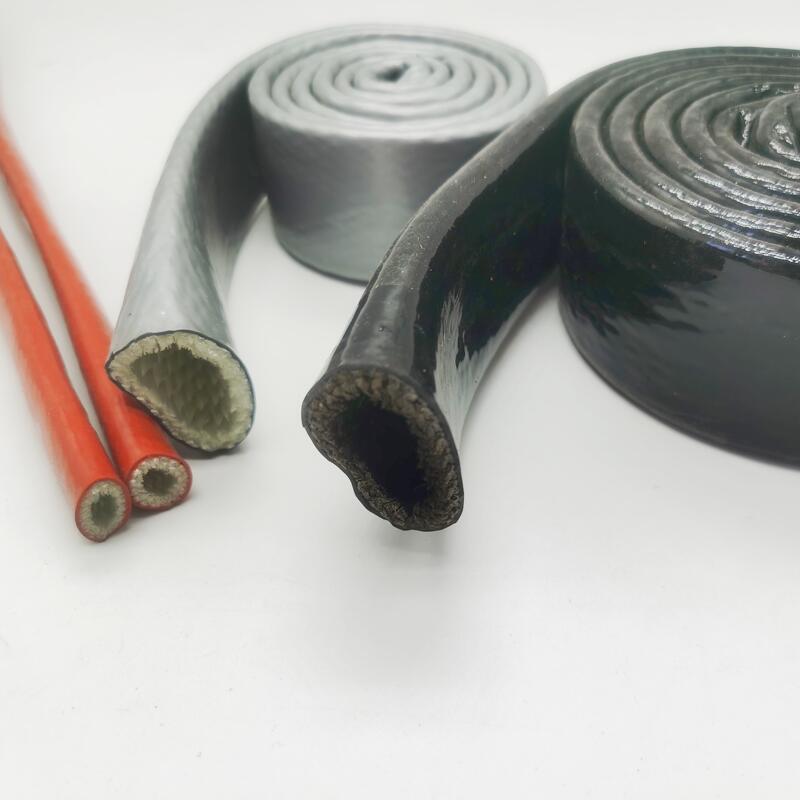Hidrolik hortumların korunması söz konusu olduğunda iki popüler seçenek fiberglas kılıf ve yangın kılıflarıdır. Her ikisi de gelişmiş güvenlik ve dayanıklılık sunarken, bileşimleri ve kullanım amaçları açısından farklılık gösterirler. Bu makalede, her birinin benzersiz özelliklerini derinlemesine inceleyerek, onların özelliklerine dair bilinçli bir anlayış sunacağız.
Hidrolik Hortum Fiberglas Kılıfı:
Fiberglas manşon, et kalınlığı 2 ila 3 milimetre arasında değişen saf cam elyafından üretilmiştir. Birincil işlevi, yüksek sıcaklıklara, aşınmaya ve dış aşınma ve yıpranmaya maruz kalan hidrolik hortumlar için yalıtım ve koruma sağlamaktır. Fiberglas kılıfın yüksek termal direnci, onu ısı dağıtımının ve elektrik yalıtımının çok önemli olduğu uygulamalar için ideal bir seçim haline getirir. Sağlam yapısı zorlu ortamlarda güvenilir performans sağlar.
Hidrolik Hortum Yangın Manşonu:
Hidrolik hortumlara yönelik yangın manşonu, cam elyaf ve silikon kombinasyonu kullanılarak yapılmıştır. Bu benzersiz bileşim ona ısıya, alevlere ve erimiş metal sıçramasına karşı olağanüstü direnç kazandırır. Fiberglas manşonun aksine, yangın manşonu yüksek düzeyde yangın koruması sağlamak, tutuşmayı önlemek ve kritik durumlarda alevlerin yayılmasını en aza indirmek için özel olarak tasarlanmıştır. Dayanıklı silikon katmanı ek bir yalıtım katmanı ekleyerek hidrolik hortumları aşırı sıcaklıklara ve yangın tehlikelerine karşı korur.
Önemli Farklılıklar:
Fiberglas manşonlar ile yangın manşonları arasındaki farklılaştırıcı faktörler aşağıdaki şekilde özetlenebilir:
Bileşim: Fiberglas kılıf yalnızca cam elyaftan oluşurken yangın kılıfları cam elyafı ve silikonu birleştirir.
Amaç: Fiberglas kılıf öncelikle koruyucu bir kaplama görevi görür ve yalıtım ile aşınma ve yıpranmaya karşı direnç sunar. Buna karşılık, yangın manşonları hidrolik hortumlara üstün yangın direnci ve termal koruma sağlama konusunda mükemmeldir.
Yangına Dayanıklılık: Fiberglas kılıf bir dereceye kadar yangına dayanıklılık sağlarken, yangın kılıfları alevin yayılmasını önlemek ve aşırı ısıya ve erimiş metale maruz kalmaya karşı önemli direnç sağlamak üzere özel olarak tasarlanmıştır.
Sonuç:
Hidrolik hortumlarınız için doğru koruyucu çözümü seçmek, uygulamanızın özel gereksinimlerine bağlıdır. Fiberglas kılıf mükemmel yalıtım ve koruyucu özellikler sunarken, yangın kılıfları tehlikeli ortamlarda yangın direncine ve termal korumaya öncelik verir. Farklılıkları anlayarak, güvenlik ihtiyaçlarınıza uygun ve hidrolik sistemleriniz için optimum performans sağlayan bilinçli bir karar verebilirsiniz.

